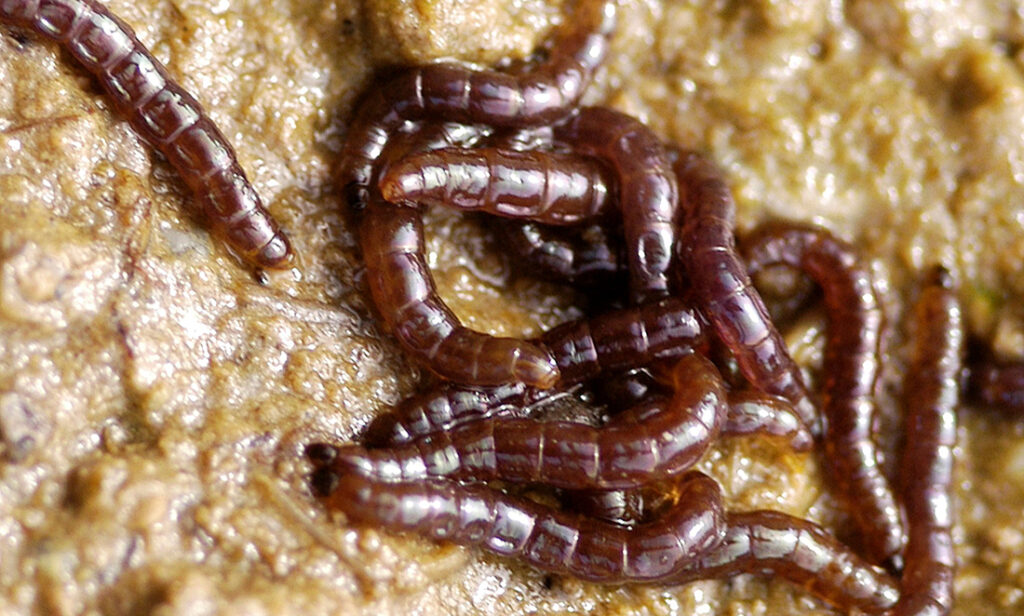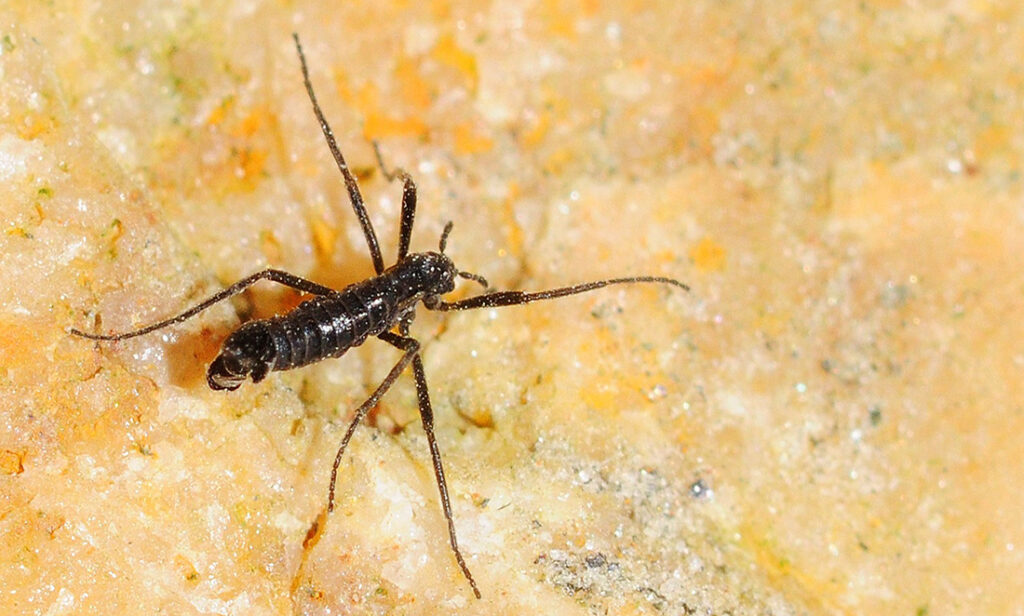In the depth of winter, many animals hibernate – they sleep it off. But a few others, especially in places where winter gets really cold, have evolved a more extreme strategy – like the Arctic ground squirrel, found in Alaska.
When snow comes, this little animal literally freezes over. It remains frozen for up to 9 months.
A few other species have this amazing ability, like some insects and frogs that are known to withstand freezing cold temperatures. Take the wood frog as an example – it’s well known for being able to survive frozen at subarctic temperatures for several months.
But, could humans too survive freezing cold temperatures? The short answer is no, not if you just go ahead and freeze yourself like a squirrel or a frog. The water inside you will break your cells – literally.
“One of the big problems with low temperatures is that the water in our cells can freeze and thereby rupture the cells, so we are left with the option of adding an agent that will lower the freezing point (supercooling point) or in some other way prevent ice crystallisation within the cell,” explains David Denlinger, an entomologist at Ohio State University in Columbus.
Despite the challenges, some people believe that freezing humans is a way to go once you die. What’s the big idea? Simple. They say that, maybe, just maybe, sometime in the future, scientists will be able to revive you.
So how do animals do it?
Well, first of all, their body produces a special antifreeze protein, which allows the insides to remain unfrozen during the super cold temperature. This prevents the cells from bursting open.
“We add antifreeze to our car radiators to lower the supercooling point, and many insects do the same thing by synthesising glycerol or some other sort of polyol that lowers the freezing point,” David explains.
They also have special genes that allow them not to feel the cold. A recent study found that the ground squirrels have evolved cold-sensing neurons that have a diminished ability to detect cold temperatures.

“If these animals were to feel cold, they would not be able to hibernate because their sensory system would tell the rest of the body that they need to warm up first,” says Elena Gracheva, a physiologist and neuroscientist at Yale University in a 2017 press release.
These crafty animals also have a specialised enzyme that allows them to burn fats instead of carbohydrates – a trick that seems to have protective effects while hibernating, according to a recent study.
Other insects have an even simpler solution. They just get rid of the water!
“An insect that I work with in Antarctica, the Antarctic midge Belgica antarctica, exploits another strategy. Rather than making an antifreeze compound, it simply gets rid of much of its body water. Many insects can survive a loss of 20% body water, but this midge can survive a loss of up to 70% of its body water, making it look like a little dried up raisin,” says David.
All these little tricks squirrels and frog use give us some hints on how to survive at extremely low temperatures. But, can humans do it too?
Freezing humans?
Current research in this field is mostly devoted to organ transplant, focused on preservation of individual organs at cold temperatures. The field has seen some significant advances in recent years, giving hope to transplant patients who currently need to rely only on freshly harvested organs.
But preserving something more than single organs, sperm, eggs or embryos is a whole other story. The field of cryonics seeks to preserve whole human bodies at ultra-low temperatures. The idea is that, in the future, medicine will be able to revive people from this frozen state.
The idea sounds a bit like science fiction, and in fact, many scientists even refrain from calling it a scientific field.
“It is one thing to freeze and thaw a few lower organisms like nematodes or insects – organisms that have an open circulatory system that freely bathes the organs – but the challenge of bringing back a complete human is formidable and unlikely attainable,” says David.
“A few cells or perhaps even an organ might be thawed and functional, but the task of a whole organism is really beyond possibility.”
“A few cells or perhaps even an organ might be thawed and functional, but the task of a whole organism is really beyond possibility”, he adds.
Many scientists even call it a false science – snake oil sold to hopeful or desperate people who believe one day science will be able to revive them, despite no evidence supporting such a possibility.
Despite the uncertainty of this process, there are currently cryonics facilities operating in the US and Russia. For example, in the US, the company Alcor currently hosts 156 people that have been cryopreserved, while in Russia, the company KrioRus has frozen 58 people.
Australia may soon join this list of countries with cryonic facilities. While not yet operational, Southern Cryonics plans to open a cryonic facility in Holbrook, NSW.
Cryonics: the basics
So how does it work? In a nutshell, first you need to be declared legally dead. Only then can a cryonics institute start working on you. As soon as you expire, doctors should place your body in ice until the cryonic technicians arrive.
From this point on, blood will be drained from your body and replaced by an organ preservation solution, followed by a cryoprotectant solution. These solutions are a concoction of different chemicals aimed at protecting your cells from the damaging effects of cold temperatures. The basic idea is that the solution will prevent crystals from forming and damaging cells and tissue when you are frozen.
Much like the wood frog, this solution aims to keep the water in your insides unfrozen. But the challenge is formidable, according to experts, as it involves a lot of organs and complex structures. “All sorts of organs must be thawed without injury – brain and nervous connections must all be functional as well as all other systems such as the circulatory and excretory systems – really, an impossible task in my view!” says David.
And the big question is, do the solutions work that are currently used in people who are frozen by a cryonics institute? According to proponents of cryonics, their solutions work, but experts doubt it. “The solutions are ineffective to prevent freezing damage. The solutions do not penetrate the cells or ‘solve’ damage. Frozen cells/tissues/organs cannot be fixed. They are hella-dead and scrambled,” says Dr Kenneth Storey, a physiologist at Carleton University who works with wood frogs.
Science aside, what if it works?
For the sake of argument, let’s assume scientists are able to revive a person frozen for hundreds of years. Then what? This is one of many questions raised recently in the case of a 14-year-old girl, called JS, who died of a rare form of cancer.
JS made the news in 2016 when she won a court battle that allowed her to be cryopreserved after her demise. Her parents are betting on the long shot that, someday, science may be able to revive her and cure her cancer.
But, what if it works? What world would JS wake up to? Who will look after her then? Will she have family then? Or funds in the bank to support her? These questions are impossible to answer accurately, as anything could happen in a few hundred years.
Also, you could imagine a more pessimistic outcome. What if, after hundreds of years frozen, there is some neurological damage. Then you would wake up trapped in an unresponsive body, in a coma or in an otherwise disabled condition.
This precedent also raises the concern that other families will look into cryonics as a viable option for their dying child.
However, right now, the science behind cryonics is basically non-existent. So unlike the nifty wood frog, the most likely outcome is that none of these frozen individuals will ever wake up.











